Who steals your leads?

As soon as a business has a sales funnel, a game called “optimization” begins. Often, it resembles throwing during a natural disaster: “ahh, what to grab for ???” What to test and optimize: design, title, texts or offer? Okay, we thought, changed, tested, and the bounce rate is still off scale. Even if the offer, texts and design are quite acceptable. What kind of invisible goblins steal leads? We understand a concrete example from CrazyEgg experts.
The purpose of the landing page is to get visitors' contacts (name, email, phone). At this moment, a whole cascade of fears falls in the user's head: “Why do they need my mail? Will she get to spammers? But what if this is a hoax? ”Do not take them at your own expense, this is an instinctive reaction to the protection of personal space. Human psychology is a tricky thing - we do not do what we can not do. And the leads are floating away from you. Despite the fact that the offer itself is attractive, there is interest in the product.
What's the matter
? You probably heard about the experiment with a frog in boiling water. It is placed in a vessel with cold water and then slowly, step by step, the temperature is increased by a certain number of degrees. The frog does not feel threatened, because the process is going on gradually.
In the same way, our consciousness resists abrupt external challenges and perfectly adapts to successive changes. This mechanism also works in marketing.
Marketing Funnel - These are small steps to eliminate customer stress on the path to high conversion.
The problem is that the brain sees any new opportunity as a threat. At this point, rational thinking is practically turned off, so it is useless to put pressure on reducing costs, increasing sales and other trivial benefits.
Small steps
This method is suggested by Robert Maurer in his book “How One Small Step Can Change Your Life: The Kaizen Path”. What does it consist of? People like to learn something new about themselves, which is why tests like “Whoever you were in the Game of Thrones” are so popular. On the landing page, do not scare users with far-reaching intentions. When you immediately ask for a name and email, this is a “head-on” collision. The first priority is to unobtrusively eliminate anxiety.
CrazyEgg experts cite the RocketMemory memory development service as an example. Here's what their landing page looked like:
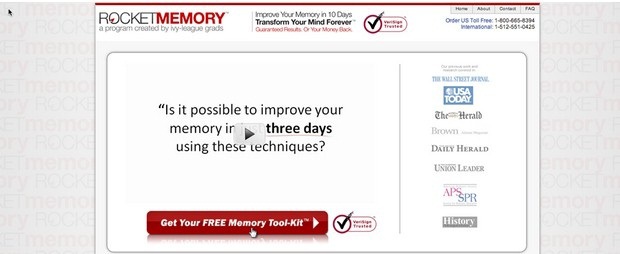
The CTA button offers you a free memory development tool. Upon transition, the following form opens:
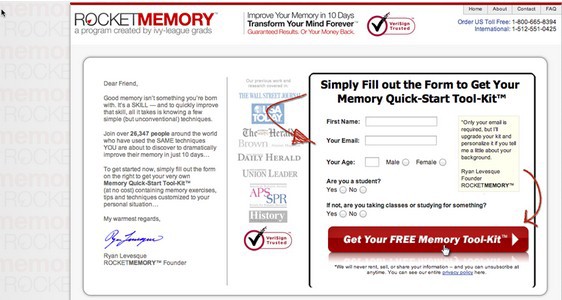
Conversion - just above 5%.
Incredible transformation
Team marketing team decided to divide the process into five small actions. They played on the strength of curiosity, and instead of a banal page with a banal lead form, they came up with a “Self-Discovery Landing Page”. Here are five steps:
Step 1. Watching the video.
Offer left the same (see the first screenshot) - “Is it possible to develop your memory in three days using these techniques?”
Stirring up curiosity moved users to the next step.
Step 2. Choice
Here, the user is asked for consent if he wants to receive those same magical techniques.
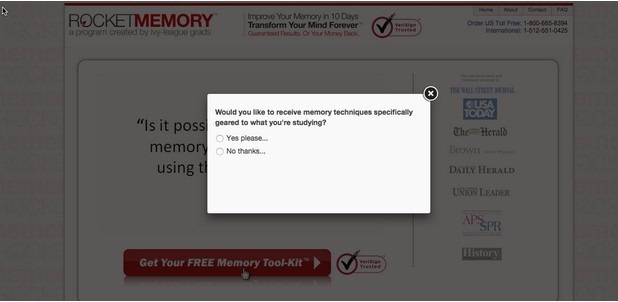
Step 3. Easy questions to get involved
When we answer questions like “Are you a man or a woman?” In online tests, we don’t bother. At the same time, curiosity drags on to move on.
Step 4. Clarifying questions for segmentation.
They allow you to assign the user to a specific category. In this case, the developers specify why and why it needs the development of memory (due to age, for study, etc.)
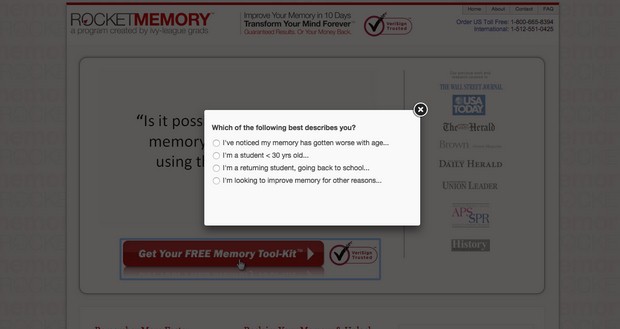
Step 5. Lead form
And finally, the capture form with the wording “Where can we send your personal recommendations?” The person has already answered several questions and now it is logical that he wants to know the results. This is how contact information is collected naturally and painlessly.
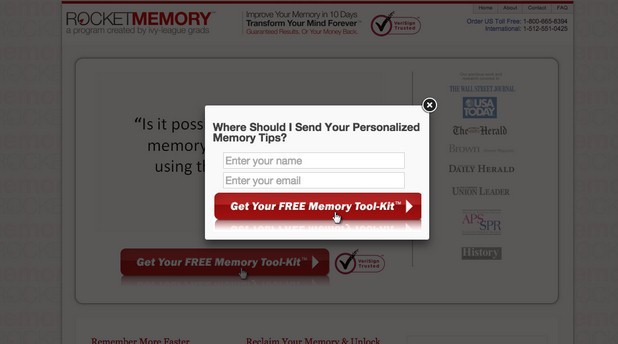
But the results of the new approach were most shocking:
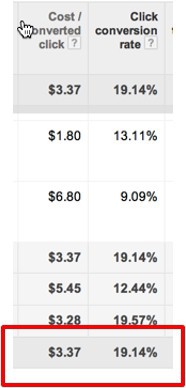
Form conversion increased almost 4 times, to 19% (!). At the same time, the cost of attracting one lead fell by 76%. In fact, nothing supernatural, just the power of micro-obligations.
Comment by Yagla.ru CEO Alexander Alimov
An excellent technique, but what about those who have a “one-level” landing page? According to our observations, the lead form and the CTA button are the most stressful elements. And here a lot depends on the wording of the appeal. Of course, given what you give to the user.
“Buy”, “Order” and other hints of payment most of all cause rejection, even in the online store. By the way, they can be mitigated with the help of a favorable condition for the buyer. “Order home delivery,” for example.
“Send”, “Leave a request” - too sluggish, do not motivate. “Calculate” is much more effective, but the proportion of stress remains. Everything related to the need for some action causes resistance.
The standard formula “Get a free consultation” in different niches gives different results. However, she already fed up with everything. As they say, it doesn’t “light”.
On one of our clients' landing pages (car buying and exchange salon) using the Yagla service , we tested 3 options:
“Get a free consultation”
“Calculate the purchase price”
“Find out the purchase price”
results
“Find out the value of the repurchase” - 10.95%;
“Calculate redemption value” - 8.63%;
“Get a free consultation” - 6.65%.
“Calculate redemption value” - 8.63%;
“Get a free consultation” - 6.65%.
Only registered users can participate in the survey. Please come in.
Which one do you think brought the highest conversion?
- 13.3% Get a free consultation 2
- 20% Calculate redemption value 3
- 66.6% Learn the buyback price 10
